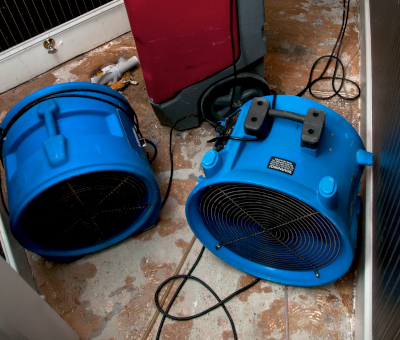
Excessive water infiltration can result in significant property damage and other far-reaching consequences. Therefore, many people believe the remediation of such issues should be handled by water damage restoration professionals.
The Restoration Process Overview
The professional water restoration process encompasses several key steps including:
Inspection
The establishment in question will perform a thorough inspection of the impacted property.
Assessment
Company representatives will author copious notes and formulate an assessment regarding the most appropriate remediation method.
Water Removal
Upon the evaluation’s completion, professional removal companies will commence the water elimination process employing pumps, industrial fans, and other pertinent machinery.
Drying
After the initial water extraction process is finished, water damage restoration companies will commence the drying process through the installation of fans and dehumidifiers. These objects are designed to expedite drying and capture any lingering moisture.
Cleaning
When the location in question is completely dry, salvageable property like furniture are thoroughly sanitized.
Restoration
This final leg involves restoring the stricken location to its pre-flood layout. Such refurbishment could range from minor fixes to total reconstruction depending upon how severe the destruction was and if other underlying factors are present.
Reasons Professionals Should Perform Water Restoration
Oftentimes, experienced, professional water restoration establishments prove beneficial in the remediation of water emergencies for the following reasons:
Mold And Mildew Growth Prevention
Water damage can quickly precipitate the growth of two potentially hazardous materials known as mold and mildew.
These lifeforms are capable of producing unsightly messes and discernible health concerns such as upper respiratory allergies and skin maladies. However, far more serious heart or lung ailments could emerge in older individuals or those with compromised immune systems.
Ebbing Possible Water Contamination
Escaped water, especially when entering a home or commercial property from a burst pipe or the outside may be contaminated with a host of microbial organisms.
In many instances, these pathogens possess the ability to cause a variety of dangerous gastrointestinal illnesses that might produce symptoms like:
- Abdominal pain
- Elevated body temperature
- Nausea
- Vomiting
- Diarrhea
- Dehydration
Some of these microbes are also capable of precipitating severe skin rashes.
Curbing Property Damage
Even limited water concentrations can rapidly destroy a home or business’s property. Property does not merely refer to ceilings or walls. Items like electronic equipment, furniture, office supplies, artwork, jewelry, clothing, and numerous other miscellaneous materials can quickly become water casualties.
Addressing Structural Issues
Water can expedite the weakening of a residential or commercial property’s structural components. Such events could drastically reduce the construction in question’s livability and functionality.
Stopping Water From Penetrating Into Tricky Spaces
Water often travels into cracks, crevices, and other difficult to access locations. Those not versed in water restoration procedures might overlook such places. However, experienced remediation entities know all the destinations water often travels and will carefully examine such spots.
Possessing The Proper Equipment
In most cases, any type of appreciable water accumulation cannot be remediated using commonly owned household items like vacuums. Typically, efficient and expedient removal necessitates industrial fans and heavy elimination apparatuses held only by experienced, reputable remediation establishments.
Averting Electrical Problems
When water seeps deep into a home or building’s walls, said natural resource might impact the structure’s electrical systems. Such events could lead to spotty or interrupted service.
That said, water serves as an electrical conductor. Ergo, once the substance contacts wiring and other electrical components, untoward, potentially fatal events like smoking and fires could also result.
Formulating Corrective Assessments
Every situation is unique. Many variables factor into a specific remediation plan including:
- The size, shape and contours of the property in question
- The source of the water infiltration
- The extent of the damage inflicted
- How much water is present
- If the water is contaminated with microbes or sewage
- The health and well-being of the residents or individuals frequenting the afflicted property or structure
A remediation company’s representatives will execute a careful consider the preceding concerns and determine the most appropriate corrective strategy.
Restoration
When a corrective strategy is established, restoration company professionals can commence the remediation process.